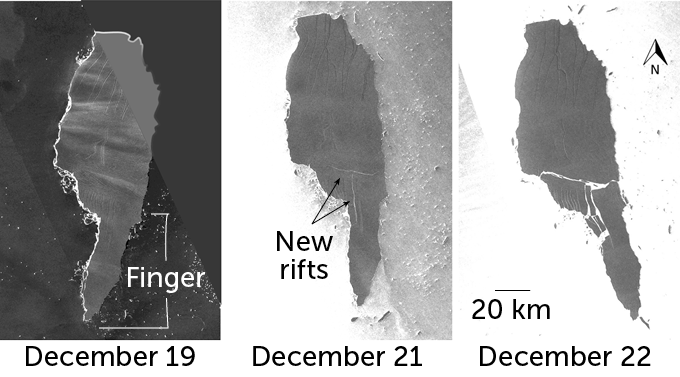It was the rift watched ‘round the world.
In July 2017, after weeks of anticipation, a massive iceberg about the size of Delaware split from the Antarctic Peninsula (SN: 7/12/17). Satellite images show that the orphaned iceberg, known as A68, ultimately disintegrated in the Southern Ocean. Now, researchers say they have pieced together the powerful forces that led to that final breakup.
Polar scientist Alex Huth of Princeton University and colleagues combined observations of the iceberg’s drift with simulations of ocean currents and wind stress. Iceberg A68a, the largest remaining chunk of the original berg, was caught in a tug-of-war of ocean currents, and the strain of those opposing forces probably pulled the iceberg apart, the team reports October 19 in Science Advances.
After A68’s separation from the Larsen C ice shelf, researchers had questions — such as what creatures live on the seafloor in the ice’s dark shadow (SN: 2/8/19). As for the iceberg itself, it took a while to get moving, lingering in the neighborhood for about a year (SN: 7/23/18). By December 2020, satellite images show, the berg had clearly seen some action and was just two-thirds of its original size.

The new simulations suggest how A68a probably met its fate. On December 20, 2020, the long, slender “finger” at one end of the iceberg drifted into a strong, fast-moving current. The rest of the ice remained outside the current. The tension rifted the berg, and the finger sheared off and broke apart within a few days.
Shear stress is a previously unknown mechanism for large iceberg breakup, and isn’t represented in climate simulations, the team says. In the Southern Ocean, the melting of massive bergs can be a large source of cold freshwater to the ocean surface. That, in turn, can have a big impact on ocean circulation and the global climate.


